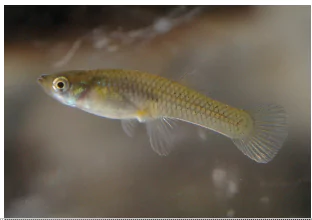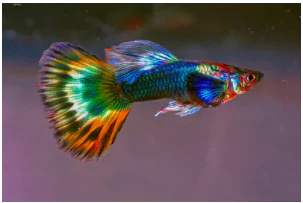The National Green Tribunal (NGT) has sought a response from the Centre regarding the use of two highly-invasive and alien fish species for mosquito control.
- The tribunal was hearing a plea regarding the release of Gambusia Affinis (Mosquitofish) and Poecilia Reticulata (Guppy) in water bodies across various states.
About Gambusia Affinis (Western Mosquitofish)

- Common Name : Mosquitofish.
- Purpose : Used as a biological agent to control mosquito larvae.
- Native Range: Mississippi River basin from Central Indiana and Illinois to the Gulf of Mexico .
- Mosquito Control: A single adult fish consumes 100 to 300 mosquito larvae per day.
- Characteristics:
- Habitat: Found in freshwater; tolerates brackish water and high salinities.
- Adaptability : Survives in low oxygen levels.
- Reproduction : Breeds throughout summer and are Viviparous , that is they give birth to live young instead of laying eggs.
- Invasiveness: Listed among the 100 worst invasive alien species by IUCN.
- Historical Use in India: Introduced in 1928 during British rule for mosquito control.
- IUCN Status: Least Concern.
Enroll now for UPSC Online Classes
About Poecilia Reticulata Common names: Guppy, Millionfish or Rainbow Fish

- Range: Native to Northern South America and Caribbean islands.
- Habitat: Found in shallow edges of pools and streams.
- Usage: Also used for mosquito larvae control.
- IUCN Status: Least Concern.
States Involved in Fish Release
- Mosquitofish was released in Assam, Arunachal Pradesh, Gujarat, Karnataka, Maharashtra, Rajasthan, Tamil Nadu, Uttar Pradesh, Odisha, Punjab, and Andhra Pradesh.
What is an Invasive Species?
- Invasive species are non-native organisms that spread rapidly and harm local ecosystems.
- They often outcompete indigenous species, disrupt ecosystems, and cause economic or environmental damage.
Examples of Invasive Species in India
- Flora: Lantana camara, Parthenium hysterophorus (Congress grass), Prosopis juliflora (Vilayati Kikar).
- Fauna: African Catfish (Clarias gariepinus), Tilapia (Oreochromis mossambicus), and Giant African Snail.
|
- Guppy was released in Maharashtra, Karnataka, Punjab, and Odisha.
- Concern: Their widespread distribution poses risks to local biodiversity.
Check Out UPSC NCERT Textbooks From PW Store
Ecological Impact
- Threat to Native Fish : Competes for food and habitat, causing food scarcity for indigenous fish.
- Biodiversity Loss : Can lead to a decline or extinction of native species.
- Ecosystem Disruption: Alterations in food chains affect entire aquatic ecosystems.
Ready to boost your UPSC 2025 preparation? Join PW’s UPSC online courses today!
![]() 4 Feb 2025
4 Feb 2025



